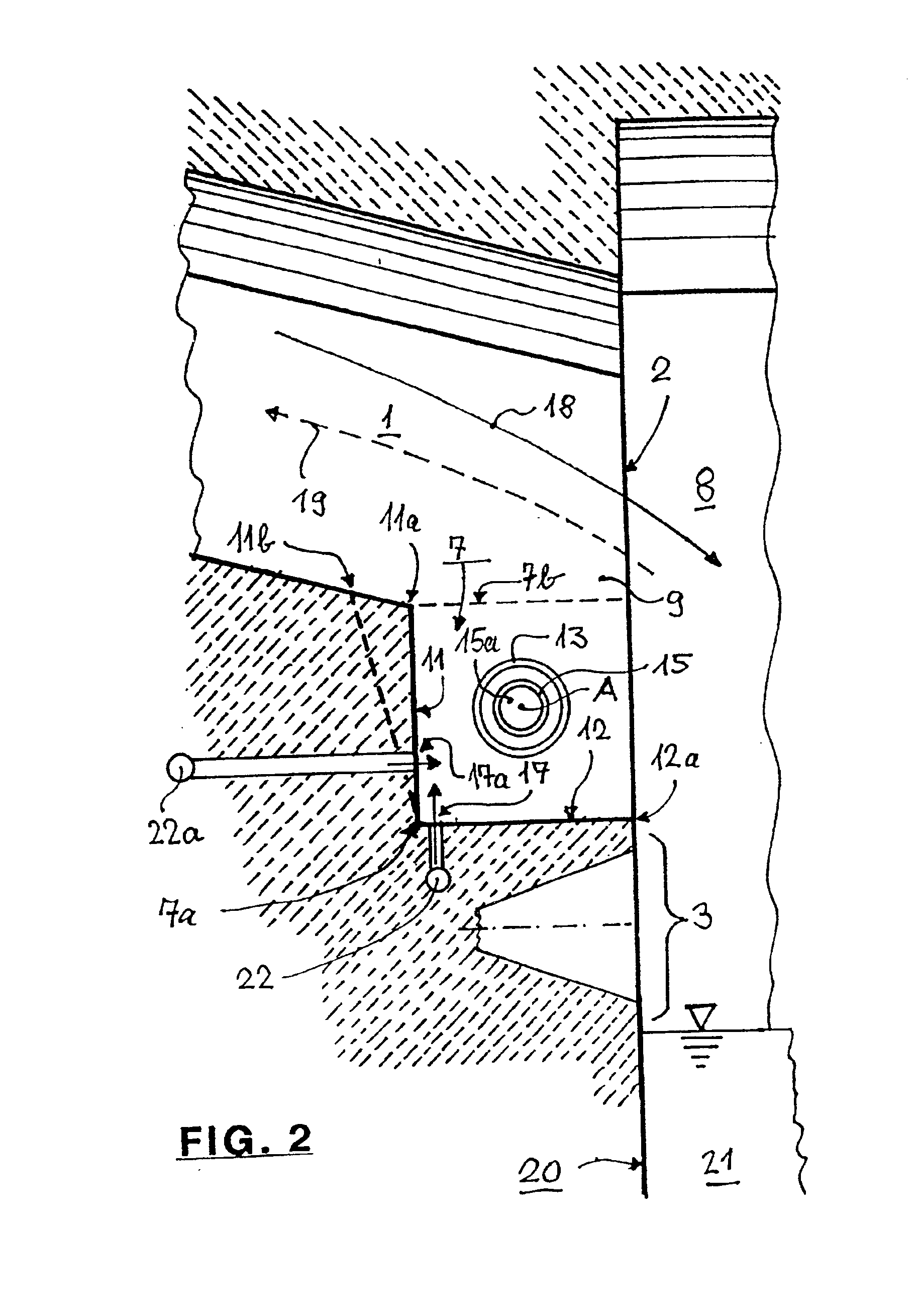Method and apparatus for heating glass melting furnaces with fossil fuels
- Summary
- Abstract
- Description
- Claims
- Application Information
AI Technical Summary
Benefits of technology
Problems solved by technology
Method used
Image
Examples
Embodiment Construction
FIG. 1 shows a port neck 1 with a port mouth 2 and its internal surfaces. The port neck 1 has under-port firing 3 of a known type, in which either two primary burners 4 and 5 are installed asymmetrically (offset to the outside from the furnace axis) or three primary burners 4, 5 and 6 are installed symmetrically, whereby only the corresponding burner blocks are shown. The primary burners comprise burner nozzles, not shown in the figure, installed behind these burner blocks for the so-called primary fuel, the largest portion of fuel. The under-port firing is operated sub-stoichiometrically, i.e., fuel rich, relative to the pre-heated combustion air.
The port neck 1 is connected at the back to a regenerator R1 (indicated by a dash line in FIG. 3) for the preheating of the primary oxidation gas, e.g., from combustion air that flows during the firing phase through this port neck 1 over a step 7 into the combustion chamber of a furnace (not shown). The port neck 1 has an outer side wall 9...
PUM
| Property | Measurement | Unit |
|---|---|---|
| Percent by volume | aaaaa | aaaaa |
| Percent by volume | aaaaa | aaaaa |
| Percent by volume | aaaaa | aaaaa |
Abstract
Description
Claims
Application Information
 Login to View More
Login to View More - R&D
- Intellectual Property
- Life Sciences
- Materials
- Tech Scout
- Unparalleled Data Quality
- Higher Quality Content
- 60% Fewer Hallucinations
Browse by: Latest US Patents, China's latest patents, Technical Efficacy Thesaurus, Application Domain, Technology Topic, Popular Technical Reports.
© 2025 PatSnap. All rights reserved.Legal|Privacy policy|Modern Slavery Act Transparency Statement|Sitemap|About US| Contact US: help@patsnap.com



